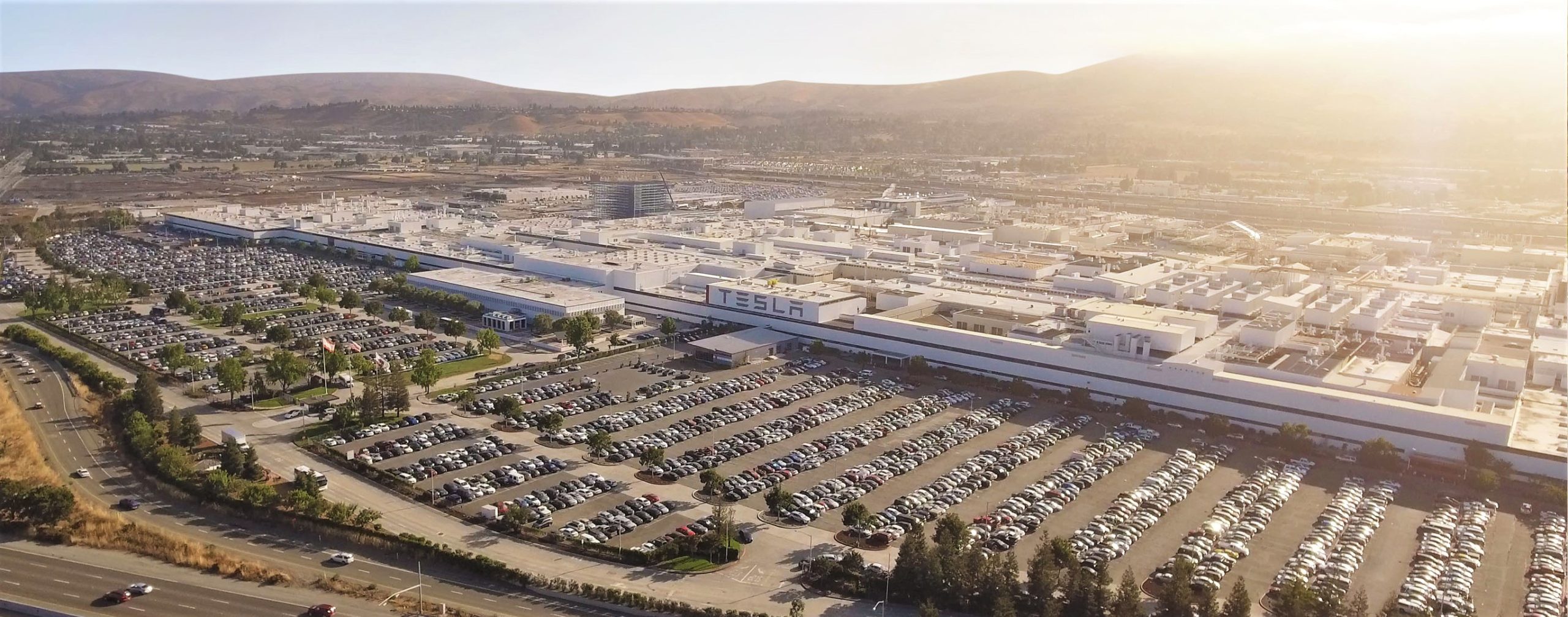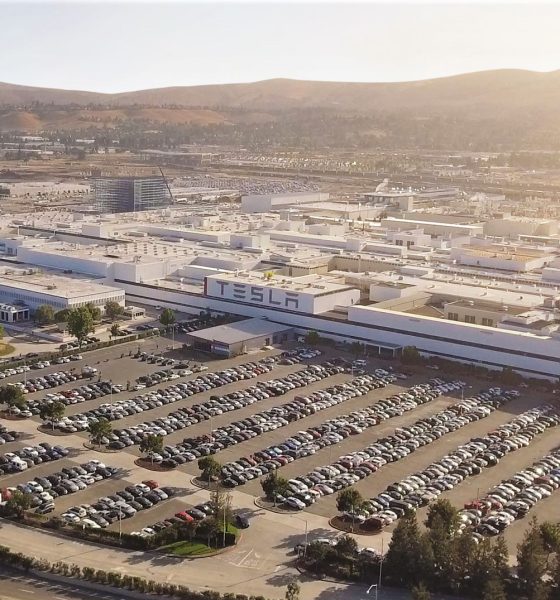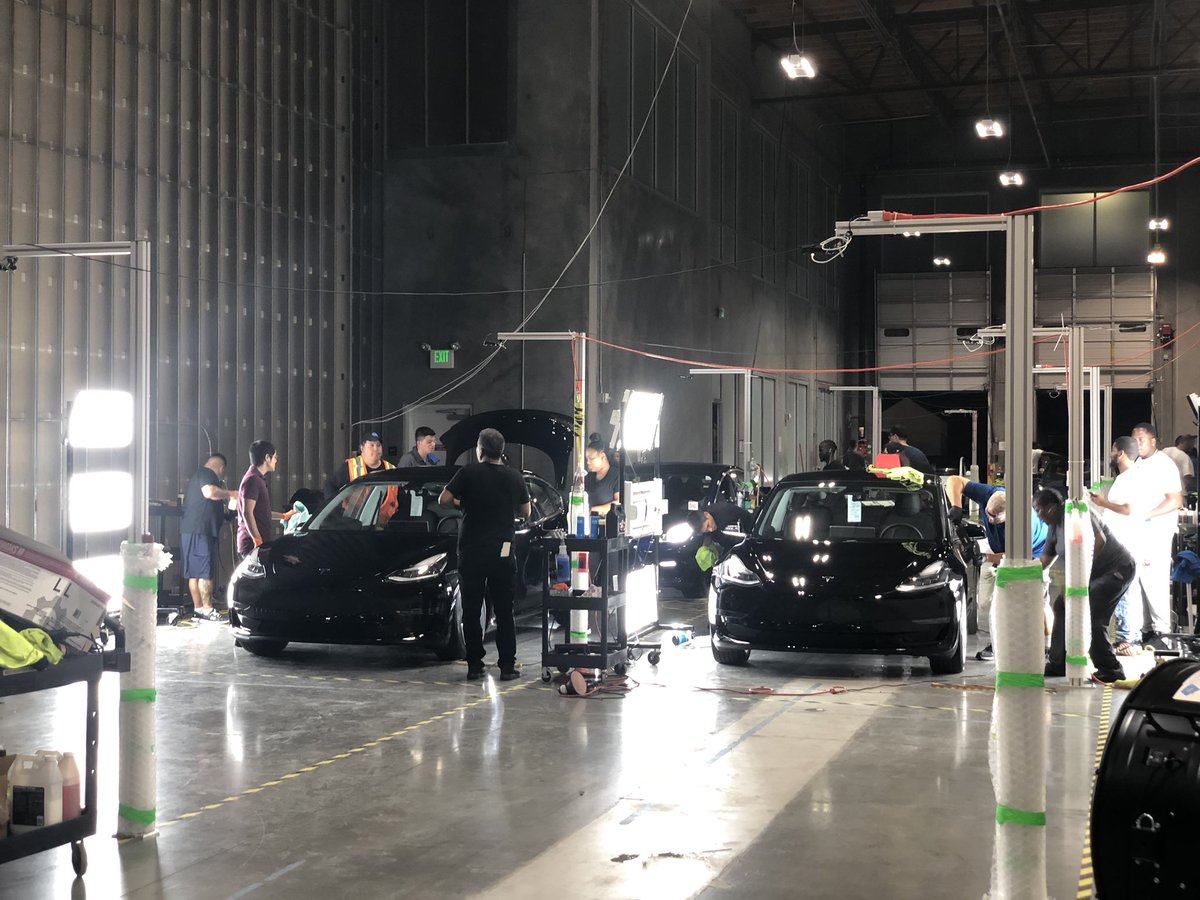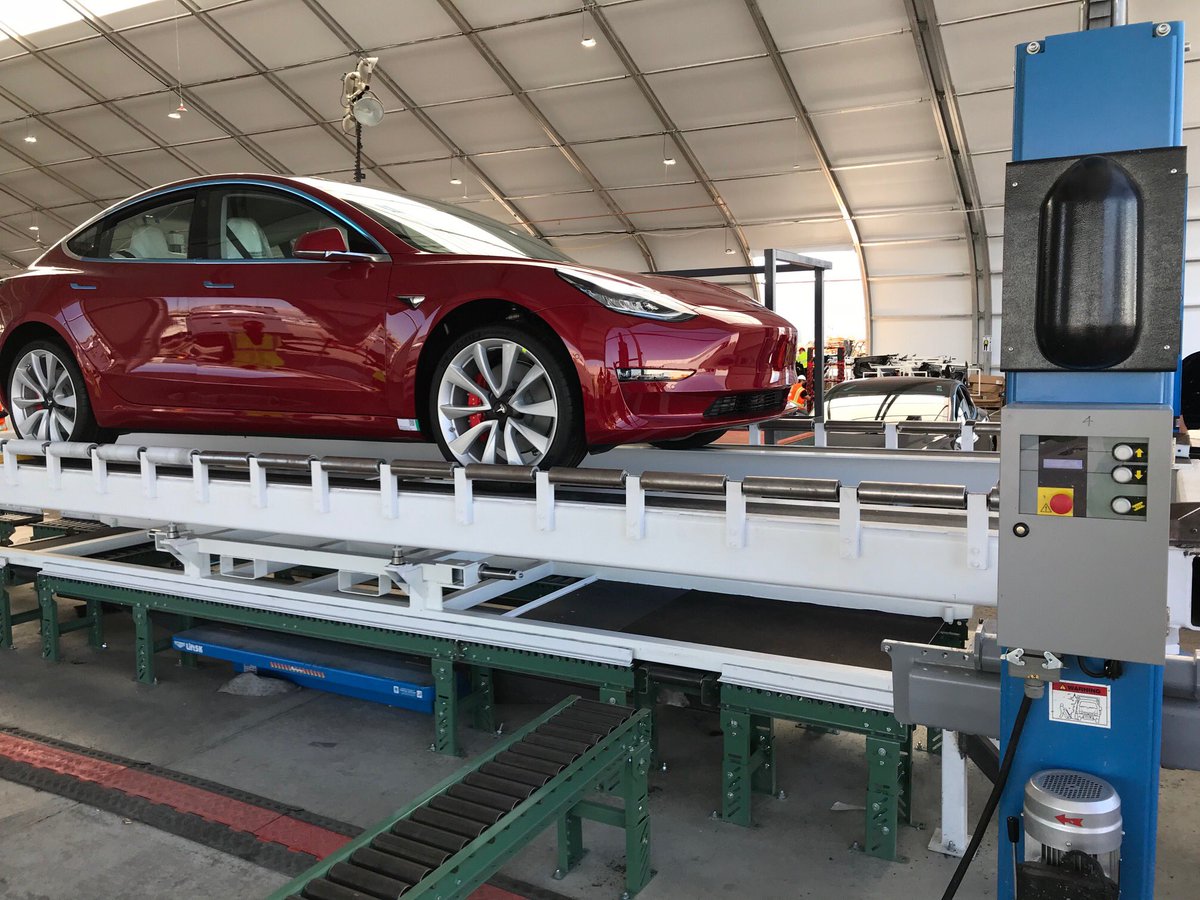

News
Tesla’s intense work culture is a perfect fit for the industry’s most driven workers
Tesla, just like SpaceX, operates under Silicon Valley principles. While this enables Tesla to evolve faster than traditional automakers, such a system also requires employees to continuously dig deep in order to accomplish targets. When SpaceX was starting out, its recruiting pitch was simple — it was the “special forces” in the space industry — and it was this pitch that attracted talent who are hungry and motivated enough to help the company achieve its milestones over the years.
The same is true for Tesla. The electric car maker has been around for 15 years — a short period of time considering the pedigree of rival automakers — but the company has already established itself as a leader in premium electric vehicles. Such growth and progress did not come easy, though, with Elon Musk openly admitting to tech journalist Kara Swisher at an episode of the Recode Decode podcast that milestones such as the Model 3 production ramp were only made possible due to “excruciating effort” and “hundred hour workweeks by everyone.”
Such an intense work culture has attracted a lot of detractors. Critics have accused the company of overworking its employees, as reflected in multiple critical exposes published about Tesla’s operations this year alone. One of the executives who left Tesla, former Chief Accounting Officer David Morton, also cited the company’s pace of work as among the reasons behind his departure. With its intense work culture, ambitious targets, and its frenetic pace, Tesla’s work environment is definitely not for everyone.

As revealed by data from Handshake, a student career-services app, though, it is exactly this type of intensity that makes Tesla attractive to young, driven applicants. Handshake noted that Telsa received more job and internship applications than any other company listed on the app in the 2016-2017 academic year. Last year alone, Tesla collected almost 500,000 applications, which is about double the volume it received in 2016. In a statement to The Wall Street Journal, Cindy Nicola, vice president of global recruiting at Tesla, noted that the company had already received more applications to date this year than it did in all of 2017.
“Our interest from candidates continues to grow year over year,” she said.
Part of Tesla’s allure among young job applicants is the company’s mission — to accelerate the world’s transition to sustainable energy — as well as the passion of its CEO, Elon Musk, a hands-on leader known to work long hours with his employees when needed. Kiran Karunakaran, who worked as an engineer at Tesla before he moved to Seattle, noted to the WSJ that before he was employed by the electric car company, he received a job offer from Apple. The iPhone-maker’s $115,000 per year offer was superior to Tesla’s 95,000 a year offer, but according to the engineer, the decision for him was a no-brainer.
“What really attracts young people to Tesla is instant gratification. You see these incredible things you’ve worked on come to fruition, on the road, in months,” he said.
Tesla’s attractiveness among applicants extends well into its internship program. For interns, the company’s flat organizational structure provides them with an opportunity to exercise their ideas and be heard. Anusha Atluri, a student from Carnegie Mellon University’s Tepper School of Business who worked as an intern at Tesla this past summer, experienced this firsthand. She worked at Tesla at a time when the company was ramping Model 3 production, and partway through her internship, she came up with an idea that could speed up the electric sedan’s lines.

The intern presented her idea in a Powerpoint presentation to her team, and it was well-received. She initially planned to discuss her suggestions with management the following week, but Tesla opted to implement her suggestions the next day. By the following week, the line was running more smoothly. “They were like, why not just try it tomorrow?” she said in a statement to the WSJ.
While the demanding hours and ambitious targets in Tesla could be exhausting, some workers have found themselves being underwhelmed in other companies after a tenure with the electric car maker. An engineering manager, who opted to remain anonymous, noted that she actually left Tesla after having a baby. When she was ready to get back on the workforce, she accepted an offer from a large tech company. Eventually, though, she felt that she was not a good fit. It did not take long before the engineering manager decided to go back to Tesla’s high-intensity environment.
“It isn’t just about working less. Everybody should have more work than they can possibly finish at all times. It forces the person to draw the line on when they give up—when they say, I’m done for the day. At Tesla, you have to achieve some kind of comfort knowing you didn’t do it all,” she said.
Elon Musk has noted that Tesla probably has the most exciting product roadmap in the market today. With exciting new electric cars and energy products in the pipeline, the company is bound to grow and expand its workforce even more. The company would most likely demand long hours and ambitious targets for its employees for years to come. Despite this, the company would likely continue to attract the most driven individuals that the talent pool has to offer — individuals that, just like Elon Musk, thrive in the face of pressure.

News
Tesla aims to combat common Full Self-Driving problem with new patent
Tesla writes in the patent that its autonomous and semi-autonomous vehicles are heavily reliant on camera systems to navigate and interact with their environment.

Tesla is aiming to combat a common Full Self-Driving problem with a new patent.
One issue with Tesla’s vision-based approach is that sunlight glare can become a troublesome element of everyday travel. Full Self-Driving is certainly an amazing technology, but there are still things Tesla is aiming to figure out with its development.
Unfortunately, it is extremely difficult to get around this issue, and even humans need ways to combat it when they’re driving, as we commonly use sunglasses or sun visors to give us better visibility.
Cameras obviously do not have these ways to fight sunglare, but a new patent Tesla recently had published aims to fight this through a “glare shield.”
Tesla writes in the patent that its autonomous and semi-autonomous vehicles are heavily reliant on camera systems to navigate and interact with their environment.

The ability to see surroundings is crucial for accurate performance, and glare is one element of interference that has yet to be confronted.
Tesla described the patent, which will utilize “a textured surface composed of an array of micro-cones, or cone-shaped formations, which serve to scatter incident light in various directions, thereby reducing glare and improving camera vision.”

The patent was first spotted by Not a Tesla App.
The design of the micro-cones is the first element of the puzzle to fight the excess glare. The patent says they are “optimized in size, angle, and orientation to minimize Total Hemispherical Reflectance (THR) and reflection penalty, enhancing the camera’s ability to accurately interpret visual data.”
Additionally, there is an electromechanical system for dynamic orientation adjustment, which will allow the micro-cones to move based on the angle of external light sources.
This is not the only thing Tesla is mulling to resolve issues with sunlight glare, as it has also worked on two other ways to combat the problem. One thing the company has discussed is a direct photon count.
CEO Elon Musk said during the Q2 Earnings Call:
“We use an approach which is direct photon count. When you see a processed image, so the image that goes from the sort of photon counter — the silicon photon counter — that then goes through a digital signal processor or image signal processor, that’s normally what happens. And then the image that you see looks all washed out, because if you point the camera at the sun, the post-processing of the photon counting washes things out.”
Future Hardware iterations, like Hardware 5 and Hardware 6, could also integrate better solutions for the sunglare issue, such as neutral density filters or heated lenses, aiming to solve glare more effectively.
Elon Musk
Delaware Supreme Court reinstates Elon Musk’s 2018 Tesla CEO pay package
The unanimous decision criticized the prior total rescission as “improper and inequitable,” arguing that it left Musk uncompensated for six years of transformative leadership at Tesla.

The Delaware Supreme Court has overturned a lower court ruling, reinstating Elon Musk’s 2018 compensation package originally valued at $56 billion but now worth approximately $139 billion due to Tesla’s soaring stock price.
The unanimous decision criticized the prior total rescission as “improper and inequitable,” arguing that it left Musk uncompensated for six years of transformative leadership at Tesla. Musk quickly celebrated the outcome on X, stating that he felt “vindicated.” He also shared his gratitude to TSLA shareholders.
Delaware Supreme Court makes a decision
In a 49-page ruling Friday, the Delaware Supreme Court reversed Chancellor Kathaleen McCormick’s 2024 decision that voided the 2018 package over alleged board conflicts and inadequate shareholder disclosures. The high court acknowledged varying views on liability but agreed rescission was excessive, stating it “leaves Musk uncompensated for his time and efforts over a period of six years.”
The 2018 plan granted Musk options on about 304 million shares upon hitting aggressive milestones, all of which were achieved ahead of time. Shareholders overwhelmingly approved it initially in 2018 and ratified it once again in 2024 after the Delaware lower court struck it down. The case against Musk’s 2018 pay package was filed by plaintiff Richard Tornetta, who held just nine shares when the compensation plan was approved.
A hard-fought victory
As noted in a Reuters report, Tesla’s win avoids a potential $26 billion earnings hit from replacing the award at current prices. Tesla, now Texas-incorporated, had hedged with interim plans, including a November 2025 shareholder-approved package potentially worth $878 billion tied to Robotaxi and Optimus goals and other extremely aggressive operational milestones.
The saga surrounding Elon Musk’s 2018 pay package ultimately damaged Delaware’s corporate appeal, prompting a number of high-profile firms, such as Dropbox, Roblox, Trade Desk, and Coinbase, to follow Tesla’s exodus out of the state. What added more fuel to the issue was the fact that Tornetta’s legal team, following the lower court’s 2024 decision, demanded a fee request of more than $5.1 billion worth of TSLA stock, which was equal to an hourly rate of over $200,000.
Delaware Supreme Court Elon Musk 2018 Pay Package by Simon Alvarez
News
Tesla Cybercab tests are going on overdrive with production-ready units
Tesla is ramping its real-world tests of the Cybercab, with multiple sightings of the vehicle being reported across social media this week.

Tesla is ramping its real-world tests of the Cybercab, with multiple sightings of the autonomous two-seater being reported across social media this week. Based on videos of the vehicle that have been shared online, it appears that Cybercab tests are underway across multiple states.
Recent Cybercab sightings
Reports of Cybercab tests have ramped this week, with a vehicle that looked like a production-ready prototype being spotted at Apple’s Visitor Center in California. The vehicle in this sighting was interesting as it was equipped with a steering wheel. The vehicle also featured some changes to the design of its brake lights.
The Cybercab was also filmed testing at the Fremont factory’s test track, which also seemed to involve a vehicle that looked production-ready. This also seemed to be the case for a Cybercab that was spotted in Austin, Texas, which happened to be undergoing real-world tests. Overall, these sightings suggest that Cybercab testing is fully underway, and the vehicle is really moving towards production.
Production design all but finalized?
Recently, a near-production-ready Cybercab was showcased at Tesla’s Santana Row showroom in San Jose. The vehicle was equipped with frameless windows, dual windshield wipers, powered butterfly door struts, an extended front splitter, an updated lightbar, new wheel covers, and a license plate bracket. Interior updates include redesigned dash/door panels, refined seats with center cupholders, updated carpet, and what appeared to be improved legroom.
There seems to be a pretty good chance that the Cybercab’s design has been all but finalized, at least considering Elon Musk’s comments at the 2025 Annual Shareholder Meeting. During the event, Musk confirmed that the vehicle will enter production around April 2026, and its production targets will be quite ambitious.








